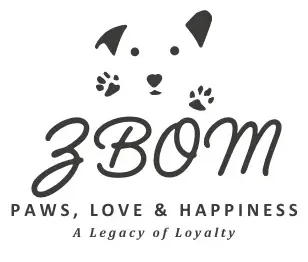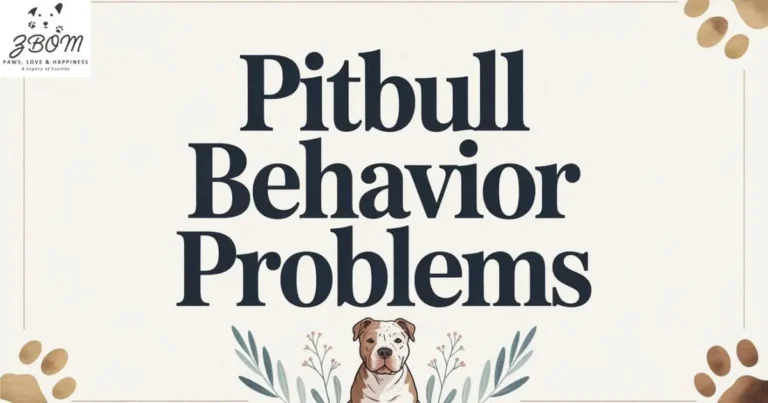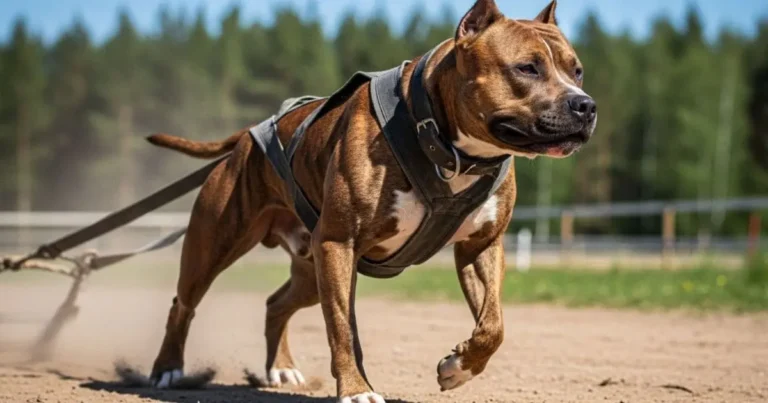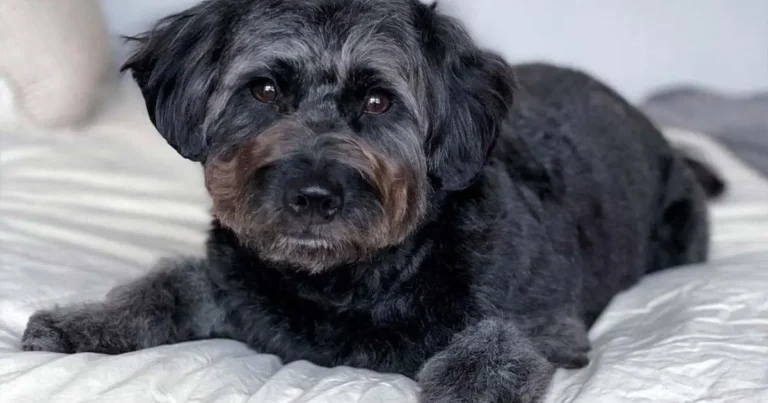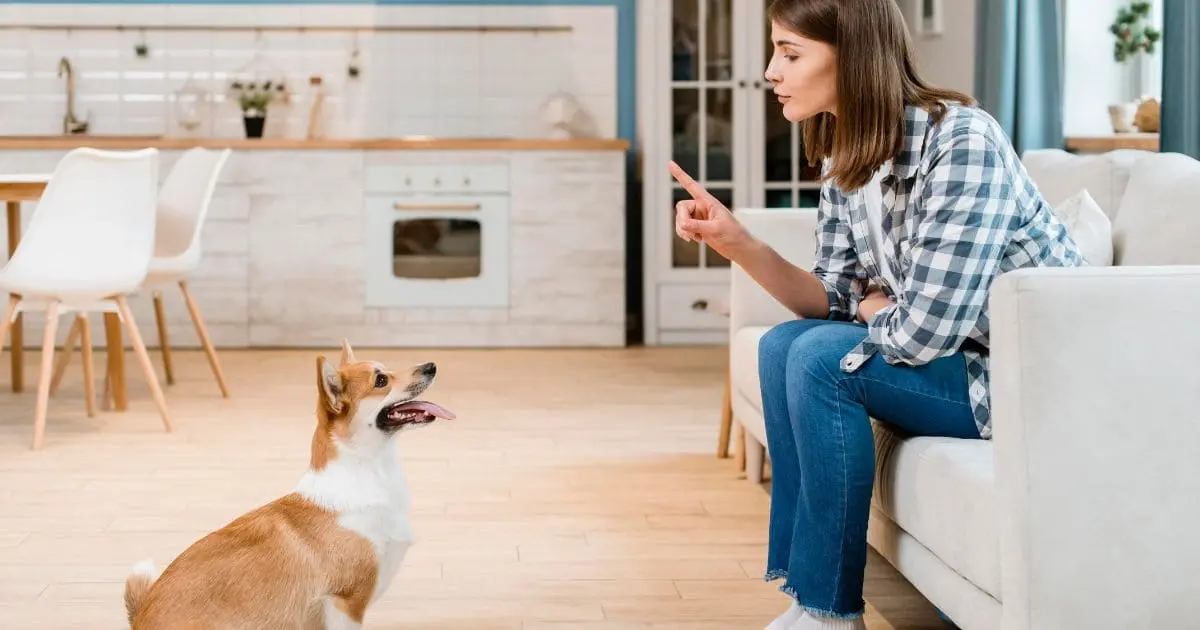
How To House Train A Pit Puppy
How To House Train A Pit Puppy? Bringing home a pit bull puppy is an exciting time filled with playful energy, adorable antics, and plenty of tail wags. But along with all that puppy love comes an important responsibility: house training. The good news is that pit bulls are intelligent, eager-to-please dogs who respond well to consistent training. With patience, a solid routine, and positive reinforcement, your pit bull puppy can learn proper bathroom habits relatively quickly.
House training isn’t just about teaching your puppy where to go—it’s about building trust, establishing communication, and setting the foundation for a well-behaved adult dog. While accidents are inevitable during the learning process, understanding your puppy’s needs and signals will help you both navigate this crucial stage with less stress and frustration.
Whether you’re a first-time dog owner or an experienced handler, this guide will walk you through the essential steps to successfully house train your pit bull puppy. From creating a consistent schedule to recognizing the signs that your pup needs to go, you’ll learn practical strategies that work with your puppy’s natural instincts rather than against them. With dedication and the right approach, you’ll soon have a house-trained companion who knows exactly where and when to do their business.
Also Read: Can I Use Human Hair Conditioner On My Dog
Short Answer About Do You Know How to Train Your Pitbull Puppy?
Training a pitbull puppy takes patience, consistency, and positive reinforcement. Start early by setting clear rules and routines, and reward good behavior instead of punishing mistakes. Focus on house training, basic commands, and socialization to help your puppy grow into a well-behaved, confident dog. With love, structure, and daily practice, your pitbull will quickly learn to follow your lead.
Do You Know How to Train Your Pitbull Puppy?

Bringing home a pitbull puppy is an exciting time filled with playful energy, adorable antics, and plenty of tail wags. But along with all that puppy love comes an important responsibility: house training. The good news is that pitbulls are intelligent, eager-to-please dogs who respond well to consistent training. With patience, a solid routine, and positive reinforcement, your pitbull puppy can learn proper bathroom habits relatively quickly.
House training isn’t just about teaching your puppy where to go—it’s about building trust, establishing communication, and setting the foundation for a well-behaved adult dog. While accidents are inevitable during the learning process, understanding your puppy’s needs and signals will help you both navigate this crucial stage with less stress and frustration.
The Importance of Consistency in Training
Consistency is the cornerstone of effective training. Your pitbull puppy thrives on predictability and routine, which helps them understand what’s expected. When everyone in the household follows the same training regimen, your puppy learns faster and experiences less confusion. Inconsistent rules or mixed messages can significantly slow down the learning process and create unnecessary stress for both you and your pet.
Establishing a relationship built on clear boundaries from day one is essential. This doesn’t mean being harsh—it means being reliable. Your puppy needs to know that the same behavior will always produce the same response, whether that’s praise for going outside or redirection when they start to have an accident indoors.
Also Read: Why Is My Husky Shedding In Winter
Early Training: Why Timing Matters
There’s truth to the saying about old dog new tricks—while adult dogs can certainly learn, early training during puppyhood is far more effective. The first few months of your pitbull puppy’s life are critical for establishing a training foundation that will last a lifetime. Puppies are naturally more adaptable and eager to learn, making this the ideal window for house training.
Starting early also helps prevent bad habits from forming. Once a behavior becomes ingrained, it requires much more effort to correct. By beginning your training regimen as soon as your puppy arrives home, you set them up for success and create positive patterns that become second nature.
Understanding Authority Without Dominance
Effective training requires you to establish authority, but this doesn’t mean asserting dominance through fear or intimidation. Modern, compassionate training recognizes that true authority comes from being a consistent, trustworthy leader. Your pitbull puppy should see you as someone who provides guidance, security, and clear expectations—not as someone to fear.
The relationship you build with your puppy should be based on mutual respect and trust. When your puppy trusts you, they’re more motivated to please you and follow your commands. This creates a positive cycle where obedience stems from desire rather than fear, making training more enjoyable for both of you.
Positive Reinforcement vs. Negative Reinforcement and Punishment
Understanding the difference between training methods is crucial for compassionate training. Positive reinforcement involves rewarding desired behavior—praising your puppy and offering treats when they eliminate outside. This method is highly effective because it creates positive associations and encourages your puppy to repeat good behavior.
Also read: Do French Bulldogs Get Along With Other Dogs
Negative reinforcement involves removing an unpleasant stimulus when the desired behavior occurs, while punishment involves adding an unpleasant consequence after unwanted behavior. In house training, punishment is generally ineffective and can damage your relationship with your puppy. Rubbing a puppy’s nose in an accident or yelling creates fear and confusion without teaching them what they should do instead.
The most effective training approach focuses heavily on positive reinforcement. When your pitbull puppy eliminates in the correct spot, immediately offer enthusiastic praise, treats, or playtime. This clear, positive feedback helps them understand exactly what earned the reward.
Establishing Rules and Boundaries
Clear rules and boundaries are essential components of your training regimen. Decide on house rules before your puppy arrives and ensure everyone in the household understands and follows them. These might include:
- Designated bathroom areas outside
- No access to certain rooms unsupervised
- Specific times for meals and water
- Consistent commands for bathroom breaks
Maintaining rules consistently prevents mixed messages. If you sometimes allow your puppy on the furniture and sometimes don’t, or if one family member allows indoor accidents to slide while another responds immediately, your puppy will experience confusion about what’s actually expected.
Also Read: Why Does My Frenchie Keep Throwing Up
Communication: The Key to Understanding
Effective training depends on clear communication. Your pitbull puppy doesn’t speak your language, so you must learn to “speak” theirs through consistent commands, body language, and timing. Use the same words for the same actions every time—whether it’s “go potty,” “outside,” or “do your business.”
Pay attention to your puppy’s communication as well. Most puppies signal when they need to go by sniffing the ground, circling, whining, or moving toward the door. Learning to recognize these signals allows you to respond promptly, preventing accidents and reinforcing the learning process.
The Role of Obedience in House Training
House training is often a puppy’s first introduction to obedience. The discipline and structure required for successful house training teach your pitbull puppy valuable lessons about following commands and responding to your guidance. This early obedience work creates a training foundation that makes teaching other commands and behaviors easier.
Basic obedience commands like “sit,” “stay,” and “come” can actually support your house training efforts. For example, teaching your puppy to sit at the door before going outside creates a routine that signals bathroom time is coming.
Also Read: How Much Are Fluffy French Bulldogs
Firm Discipline Without Harshness
Firm discipline doesn’t mean harsh treatment or punishment. It means being unwavering in maintaining rules and consistently redirecting unwanted behavior. When your puppy starts to have an accident indoors, calmly but firmly interrupt them with a neutral sound or word, then immediately take them outside to finish.
This approach teaches without traumatizing. Your puppy learns that indoor elimination is interrupted and redirected, while outdoor elimination is celebrated. The firmness comes from your consistency and immediate response, not from anger or physical correction.
Building Trust Through the Training Process
Trust is the foundation of effective training and a strong relationship with your pitbull puppy. Every positive interaction during house training—every successful bathroom break, every patient redirection, every moment of understanding—builds trust between you and your pet.
When your puppy trusts you, they’re more confident, less anxious, and more receptive to learning. They understand that you’ll guide them through confusing situations and celebrate their successes. This trust makes the entire behavior modification process smoother and more enjoyable.
Also Read: When Can Male Dogs Get Females Pregnant
Making Training Enjoyable and Bonding
House training doesn’t have to be a chore. When approached with the right attitude, it becomes an opportunity for bonding with your pitbull puppy. Those trips outside, the celebrations after successful bathroom breaks, and even the patience during setbacks all strengthen your connection.
Enjoyable training creates positive associations with learning and following your guidance. Your puppy should look forward to training time, not dread it. Incorporate play, affection, and enthusiasm into your training regimen to keep your puppy engaged and happy.
The Learning Process: Patience and Progress
Remember that the learning process isn’t linear. Your pitbull puppy will have good days and setbacks. They’ll grasp some concepts quickly while struggling with others. This is completely normal and expected. Patience during this journey is crucial for effective training.
Celebrate small victories and don’t get discouraged by accidents. Each mistake is a learning opportunity, and each success builds toward a fully house-trained dog. Understanding that behavior change takes time helps you maintain realistic expectations and avoid frustration.
Also Read: How Many Puppies Do French Bulldogs Have
Creating Your Training Foundation
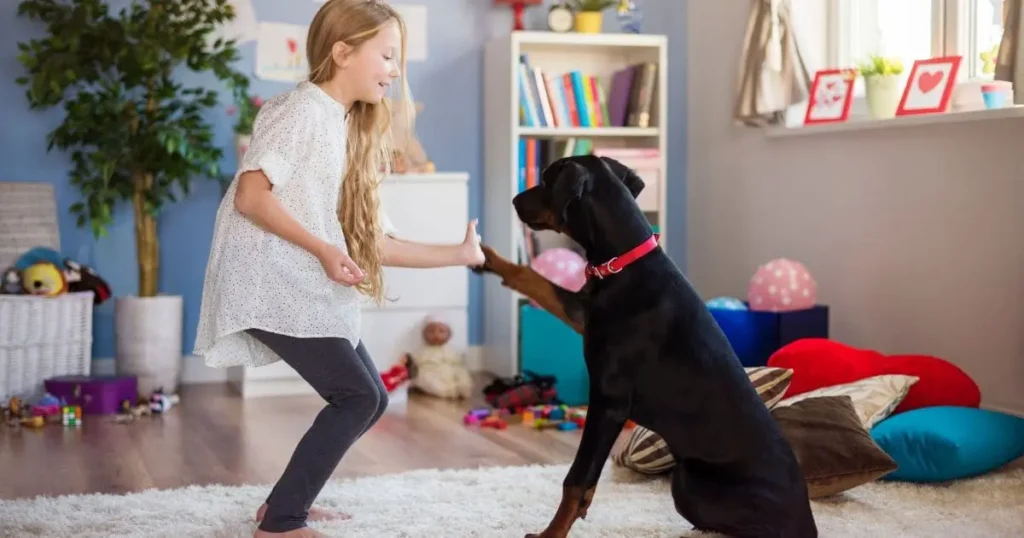
The training foundation you establish during house training will influence your pitbull puppy’s behavior for years to come. By combining consistency, clear communication, positive reinforcement, and compassionate training methods, you’re not just teaching your puppy where to go to the bathroom—you’re teaching them how to learn, how to trust, and how to be a well-adjusted member of your family.
Avoid mixed messages by ensuring everyone involved in your puppy’s care follows the same training regimen and maintains the same rules and boundaries. This unified approach prevents confusion and accelerates the learning process.
Moving Forward with Confidence
House training your pitbull puppy requires dedication, but it’s one of the most important investments you’ll make in your relationship with your dog. By understanding the principles of authority without dominance, the power of positive reinforcement over punishment, and the critical importance of consistency, you’ll create an effective training program that’s also compassionate and enjoyable.
The commands, obedience, and firm discipline you establish now will serve as building blocks for a lifetime of good behavior. Remember that timing matters—early training is most effective—but with patience and proper technique, even setbacks can be overcome.
Your pitbull puppy is eager to please and capable of learning. With clear communication, consistent boundaries, and a foundation built on trust rather than fear, you’ll soon have a reliably house-trained companion who understands the rules and respects your authority. The journey may have its challenges, but the bond you build through compassionate training will make every effort worthwhile.
Also Read: How Old Does A Dog Have To Be To Breed
When Should I Start Training My Pitbull?
It’s important to start training your dog at a very young age. The best time to start is as soon as you bring them home. When puppies are in that developmental stage, they are like a sponge, constantly learning and imprinting from their environment and from their relationships.
Understanding the Developmental Stage
The developmental stage of your pitbull puppy is a unique and fleeting period that offers the greatest opportunity for effective house training. During these early weeks and months, your puppy’s brain is rapidly forming neural connections and establishing patterns that will influence their behavior throughout their entire life. This critical window is when learning happens most naturally and efficiently.
Puppies in this developmental stage don’t just learn specific commands or rules—they’re forming their entire understanding of how the world works. Every experience, every interaction, and every consequence shapes their worldview and their expectations. This is why the timing of when you start training matters so profoundly.
Why Young Age Makes All the Difference
Starting at a young age isn’t just recommended—it’s essential for optimal results. Young puppies haven’t yet developed bad habits or negative associations with certain behaviors. Their minds are open and receptive, making them ideal students for house training and other foundational lessons.
How Much Is A Frenchie, When you bring them home, your pitbull puppy is entering a completely new world. Everything is unfamiliar, which means they have no preconceived notions about where they should or shouldn’t eliminate. This blank slate is your greatest advantage. By immediately establishing clear expectations and routines, you help your puppy learn the right way from the very beginning.
The Best Time to Start: Immediately
The best time to start house training is the moment your puppy crosses your threshold. Don’t wait for them to “settle in” or reach a certain age milestone. From day one, begin implementing your training routine. Take your puppy to their designated bathroom spot immediately after arriving home, and continue taking them there regularly throughout the day.
Many new owners make the mistake of giving their puppy a few days or weeks to adjust before beginning training. However, during this waiting period, your puppy is still learning—they’re just learning without your guidance. They may develop habits of eliminating wherever is convenient, making it harder to retrain them later.
Puppies as Sponges: The Learning Advantage
When puppies are like a sponge, they absorb everything around them without the filters or resistance that older dogs might have. This metaphor perfectly captures how your pitbull puppy’s mind works during these crucial early months. Just as a sponge soaks up water effortlessly, your puppy soaks up information, patterns, and lessons from every experience.
This sponge-like quality means that puppies learn incredibly quickly when taught consistently. A behavior that might take weeks to teach an older dog can be learned in days by a puppy in their developmental stage. However, this also means they’ll pick up bad habits just as quickly if you’re not proactive with training.
Also read: What Are Fluffy Frenchies Mixed With
Constantly Learning: Every Moment Matters
Your pitbull puppy is constantly learning, whether you’re actively teaching them or not. Every time they eliminate indoors without correction, they’re learning that this behavior is acceptable. Every time they whine at the door and someone lets them out, they’re learning to communicate their needs. Every interaction is a lesson.
This constant learning process means you must be vigilant and consistent from the moment you bring them home. You can’t take breaks from training because your puppy isn’t taking breaks from learning. Their brain is always processing, always making connections, always forming associations between actions and outcomes.
The Power of Imprinting
Imprinting is a powerful psychological process where puppies form deep, lasting associations during their developmental stage. The experiences your pitbull puppy has during these early weeks become deeply embedded in their behavior patterns and emotional responses. Positive imprinting during house training creates a foundation of good habits that persists throughout their life.
When you consistently take your puppy to the same spot, use the same commands, and provide the same positive reinforcement, you’re creating strong imprints. These imprints become automatic responses—your puppy learns that going outside means bathroom time, that eliminating in the right spot brings praise, and that their environment has predictable patterns they can rely on.
Learning from Their Environment
Your pitbull puppy’s environment is their classroom. Everything they see, smell, hear, and experience teaches them something about how to behave. If their environment is chaotic and inconsistent, they’ll struggle to understand what’s expected. If their environment is structured and predictable, learning becomes natural and stress-free.
Create an environment that supports house training from the day you bring them home. This means:
- Establishing a consistent bathroom area outside
- Keeping your puppy in a confined, easily supervised space when indoors
- Removing temptations and opportunities for accidents
- Maintaining regular schedules for feeding, water, and bathroom breaks
The environment you create during this developmental stage shapes your puppy’s understanding of house rules. A well-designed environment makes correct behavior easy and incorrect behavior difficult, naturally guiding your puppy toward success.
Also Read: How To Cool Down A French Bulldog
The Role of Relationships in Learning
Puppies don’t just learn from their environment—they learn from their relationships, particularly their relationship with you. Your pitbull puppy looks to you for guidance, security, and information about how to navigate their new world. The relationship you establish from the moment you bring them home influences how receptive they are to training.
A strong, positive relationship built on trust and clear communication makes your puppy eager to please you and attentive to your cues. When your puppy feels secure in their relationship with you, they’re less anxious and more focused on learning. They want to understand what makes you happy because your approval matters to them.
Conversely, if your puppy experiences fear, confusion, or inconsistency in their relationships during this critical young age, they may become anxious, resistant, or uncertain about training. The emotional quality of your relationship directly impacts the effectiveness of house training and all future training efforts.
Building Relationships Through Training
House training isn’t just about teaching bathroom habits—it’s an opportunity to build a strong relationship with your puppy during their most impressionable developmental stage. Every successful bathroom trip followed by praise strengthens your bond. Every patient redirection teaches your puppy that you’re a reliable guide, not a source of fear.
Do Fluffy Frenchies Shed, Use this time when puppies are constantly learning to establish yourself as a trustworthy leader. Be patient, consistent, and encouraging. Celebrate successes enthusiastically and handle accidents calmly. Your puppy is watching and learning not just about bathroom rules, but about who you are and whether they can trust you.
Maximizing the Sponge Phase
Since puppies are like a sponge during this period, maximize this advantage by providing clear, consistent lessons. Don’t assume your puppy will “figure it out” on their own—they need your active guidance to absorb the right lessons. Take them out frequently, reward them immediately for correct behavior, and gently redirect mistakes.
The sponge-like learning ability of puppies during their young age means that what you teach now becomes deeply ingrained. Good habits established during this developmental stage are much easier to maintain than to create later. You’re not just training for today—you’re shaping behaviors that will last a lifetime.
The Environment-Relationship Connection
Your puppy’s learning is most effective when their environment and their relationships work together harmoniously. A supportive environment provides the structure and consistency that makes learning possible, while positive relationships provide the motivation and emotional security that makes learning effective.
When you bring them home, consciously design both the physical environment and the emotional relationship to support house training. Create spaces that encourage success, establish routines that your puppy can predict, and build a relationship based on trust and clear communication. Together, these elements create optimal conditions for a puppy who is constantly learning.
Also Read: How Much Do Golden Retrievers Shed
Seizing the Best Time to Start
The best time to start training isn’t tomorrow, next week, or when your puppy is older—it’s now. Every day during the developmental stage is precious and irreplaceable. Puppies who begin training as soon as you bring them home typically achieve reliable house training weeks faster than puppies whose training is delayed.
Don’t let the young age of your puppy discourage you from starting immediately. Even at eight or nine weeks old, your pitbull puppy is ready and able to begin learning. Their sponge-like brain is primed for imprinting, their relationship with you is forming, and their understanding of their environment is taking shape. Use this window wisely.
Long-Term Benefits of Early Start Training

The advantages of start training during the developmental stage extend far beyond house training. Puppies who learn to learn early—who understand that paying attention to their owners brings rewards, that their environment has rules, and that their relationships are based on clear communication—become easier to train in all areas throughout their lives.
By starting when puppies are in that developmental stage, you’re not just teaching bathroom habits. You’re teaching your pitbull puppy how to be a student, how to focus on you for guidance, and how to navigate the world confidently. These meta-skills make every future training endeavor more successful.
Embracing the Journey from Day One
Can You Shave A Husky, From the moment you bring them home, embrace your role as your puppy’s primary teacher. Recognize that your puppy is constantly learning and that this young age offers an unrepeatable opportunity. Create an environment that supports success, build relationships based on trust and consistency, and take advantage of your puppy’s sponge-like ability to absorb new information.
The developmental stage won’t last forever. Puppies grow quickly, and the window of maximum receptivity gradually closes. By the time you realize months have passed, your puppy will have already formed habits—good or bad—based on what they’ve learned from their environment and their relationships with you.
Start training immediately, teach consistently, and watch as your pitbull puppy soaks up lessons like a sponge. The effort you invest during this critical young age will pay dividends for years to come, resulting in a well-trained, confident, and happy dog who understands their place in your home and their relationship with you. The best time to start is now—don’t let this precious developmental stage pass without making the most of it.
Pitbull Puppy Training Schedule
The younger puppies are, the more they demonstrate quick learning abilities that set them apart from older dogs. This remarkable capacity to absorb new things makes the early months of your pitbull puppy’s life the most valuable time for establishing training foundations. Understanding how age influences learning ability is crucial for achieving successful training outcomes.
Why Younger Puppies Excel at Learning
Younger puppies possess neurological advantages that facilitate quick learning. Their brains are in a state of rapid development, forming new neural pathways at an accelerated rate. This biological reality means that younger puppies can master new things with less repetition and retain information more effectively than they will at any other life stage.
The overall potential of your pitbull puppy is directly linked to how early and consistently you begin training. When you capitalize on the natural learning ability of younger puppies, you’re not just teaching specific behaviors—you’re expanding their capacity to learn throughout their entire lives. Early training creates mental frameworks that make all future learning easier and more efficient.
Understanding Overall Potential and Training Success
How To House Train A Pit Puppy? Your pitbull puppy’s overall potential isn’t fixed—it’s developed through proper training at appropriate developmental phases. A puppy who receives effective training during critical age periods develops confidence, focus, and responsiveness that compound over time. Conversely, puppies who miss these training windows may struggle to reach their full potential, even with intensive training later.
Training success depends on aligning your methods with your puppy’s current capabilities and developmental needs. This means understanding what new things your pitbull puppy can realistically learn at each training stage and adjusting your expectations and techniques accordingly.
The Pitbull Puppy Training Schedule: An Overview
A well-structured training schedule recognizes that puppy growth happens in distinct developmental phases, each with unique characteristics and learning opportunities. The following sections outline a pitbull training guide organized by age period, helping you implement age-based training that maximizes your puppy’s natural learning ability.
This training schedule isn’t arbitrary—it’s based on the biological and psychological training stages that all puppies experience. By following an age-appropriate approach, you work with your pitbull puppy’s natural development rather than against it, leading to more effective training and greater overall potential.
Training Stages: The Foundation for Success
Understanding training stages helps you plan training exercises that match your puppy’s developmental readiness. Each stage builds upon the previous one, creating a progressive path toward successful training. Rushing through stages or skipping them entirely can create gaps in your pitbull puppy’s education that may cause problems later.
The training stages we’ll explore in the following sections provide a roadmap for early training through adolescence. This pitbull training guide respects the unique needs of each age period while maintaining consistency in overall training philosophy.
8-10 Weeks: The Foundation Stage
This earliest age period is when younger puppies are most impressionable. Your pitbull puppy has just left their mother and littermates, making this a critical time for bonding and basic learning. The quick learning ability of puppies this young is remarkable, but they also have very short attention spans.
Training Exercises for This Stage:
During this age period, focus on new things that establish basic routines and positive associations. House training should begin immediately, with bathroom breaks every 1-2 hours. Training exercises should be brief—just 5-10 minutes at a time—to match your puppy’s limited concentration.
Introduce your pitbull puppy to their name and basic recall. Use their name frequently with positive associations, never for punishment. Begin crate training as part of your training schedule, making the crate a safe, comfortable space rather than a punishment.
Socialization is a crucial part of early training during this developmental phase. Expose your pitbull puppy to new things like different sounds, surfaces, and gentle handling. This builds overall potential by creating a confident, well-adjusted dog.
The learning ability at this stage means your puppy will quickly form associations—both good and bad. Every interaction is teaching them something, so be intentional about what lessons they’re receiving during this sensitive age period.
10-12 Weeks: Building Block Stage
As your pitbull puppy enters this training stage, their attention span increases slightly and their physical coordination improves. Younger puppies at this age can handle slightly longer training exercises and begin learning more complex new things.
Training Exercises for This Stage:
Continue house training with the same consistency, though you may notice your pitbull puppy can hold their bladder slightly longer. Maintain your training schedule but begin extending the time between bathroom breaks to 2-3 hours during the day.
Introduce basic commands like “sit” and “down.” The quick learning ability of puppies at this age means they can master these foundational commands rapidly with consistent practice. Keep training exercises positive and reward-based to maintain enthusiasm.
Your pitbull training guide for this age period should include leash introduction. Let your puppy wear a lightweight collar for short periods, then add a leash and allow them to drag it under supervision. This prepares them for proper leash training in the next developmental phase.
Socialization remains critical for successful training during this stage. Arrange controlled meetings with vaccinated, friendly dogs and a variety of people. These experiences during this age period shape your puppy’s overall potential for becoming a well-adjusted adult.
12-16 Weeks: Confidence Building Stage
This training stage represents a sweet spot where younger puppies have developed enough physically and mentally to engage in more structured training exercises, but they’re still highly receptive to new things. The learning ability during this developmental phase is at its peak.
Training Exercises for This Stage:
House training should show significant progress during this age period. Your pitbull puppy may now signal when they need to go out, demonstrating the successful training you’ve been implementing. Continue your training schedule religiously—consistency now solidifies lifelong habits.
How To House Train A Pit Puppy? Expand your pitbull puppy’s command vocabulary to include “stay,” “come,” and “leave it.” The quick learning characteristic of this stage means your puppy can handle multiple training exercises in a day, though each session should still be relatively brief—15-20 minutes maximum.
Begin formal leash training as part of your training schedule. Your pitbull puppy is now coordinated enough to walk on leash without constant tripping. Use positive reinforcement to teach loose-leash walking, making walks enjoyable rather than frustrating.
This age period is also ideal for introducing new things like basic impulse control exercises. Teach your pitbull puppy to wait for food bowls, sit before going through doors, and settle on command. These exercises build the self-control necessary for effective training in all areas.
The overall potential you’re developing during this training stage extends beyond obedience. You’re teaching your puppy how to think, how to control impulses, and how to look to you for guidance—skills that support successful training throughout their life.
4-6 Months: The Testing Stage
As your pitbull puppy moves through developmental phases, this age period often brings new challenges. Younger puppies entering adolescence may test boundaries and show less consistent recall. However, their learning ability remains strong if you maintain your training schedule.
Training Exercises for This Stage:
House training should be largely reliable by this training stage, though occasional accidents during excitement or play may occur. Don’t regress on your training schedule—maintain consistency even when your puppy seems “trained.”
This age period is perfect for introducing new things that require more concentration and physical capability. Your pitbull training guide should now include more advanced commands like “heel,” extended “stays,” and reliable recall even with distractions.
Training exercises can become more complex and engaging during this developmental phase. Introduce basic tricks, scent work, or simple agility obstacles. These activities leverage your pitbull puppy’s quick learning while providing mental stimulation that prevents boredom and destructive behavior.
Socialization continues to be crucial for overall potential. This training stage is when fear periods may emerge, so maintain positive exposure to new things while respecting your puppy’s comfort level. Pushing too hard can create lasting fears, while avoiding new experiences can create an anxious adult dog.
The successful training you achieve during this age period often determines whether problematic behaviors develop during full adolescence. Your pitbull puppy is testing what they can get away with—consistent responses now prevent major issues later.
6-12 Months: Adolescence and Refinement Stage
This training stage is often the most challenging. Your pitbull puppy is maturing physically but still has puppy impulses and energy. Younger puppies moving into adolescence may seem to “forget” early training, but this is normal. Their learning ability hasn’t diminished—they’re simply testing boundaries.
Training Exercises for This Stage:
House training setbacks during this age period are uncommon but possible, especially in males who begin marking behavior. Maintain your training schedule and address any regression immediately rather than assuming your puppy has “forgotten” their training.
Refine all previously learned commands during this developmental phase. Your pitbull training guide should emphasize proofing—practicing commands in various locations, with increasing distractions, and at greater distances. This ensures your training exercises produce reliable behavior in real-world situations.
This training stage is ideal for introducing new things that require maturity and focus, such as advanced tricks, therapy dog preparation, or sport-specific training. The overall potential you’ve been developing since early training now allows your pitbull puppy to handle complex, multi-step exercises.
Physical training exercises become more important during this age period as your puppy has adult energy but still needs mental stimulation. Structured play, longer walks, and challenging activities prevent the destructive behavior that can derail successful training.
Maximizing Quick Learning at Every Stage
Throughout all developmental phases, the quick learning ability of your pitbull puppy is your greatest asset. Younger puppies absorb new things faster than they ever will again, but this advantage only benefits you if you’re actively teaching during each training stage.
Your training schedule should evolve as your puppy moves through age periods, but certain principles of effective training remain constant: consistency, positive reinforcement, appropriate challenge level, and patience. These elements support successful training regardless of which developmental phase your pitbull puppy is experiencing.
The Compounding Effect of Age-Based Training
Following an age-appropriate pitbull training guide creates a compounding effect. The new things your puppy learns at 8 weeks make learning at 12 weeks easier. The training exercises mastered at 4 months provide the foundation for more complex work at 8 months. Each training stage builds overall potential that serves your dog for life.
This is why early training is so critical—it’s not just about what your pitbull puppy learns during younger months, but about how those lessons expand their capacity for all future learning. A puppy who misses these critical age periods can certainly still learn, but they’ll never quite reach the overall potential they could have achieved with proper training during optimal developmental phases.
Your Role in Developing Overall Potential
Your pitbull puppy’s overall potential isn’t predetermined—it’s something you actively develop through consistent, age-appropriate training exercises. The learning ability of younger puppies gives you an incredible opportunity, but it requires commitment to a structured training schedule across all training stages.
Successful training isn’t about perfection—it’s about providing appropriate training exercises for each age period and maintaining consistency even when progress seems slow. Every training stage has its challenges, but each also offers unique opportunities to teach new things that expand your pitbull puppy’s capabilities.
Looking Forward: The Reward of Age-Based Training
The following sections of this pitbull training guide will provide detailed training exercises specific to each developmental phase, giving you concrete tools for maximizing your puppy’s quick learning and overall potential. By understanding how age period influences learning ability and adjusting your approach accordingly, you set your pitbull puppy up for successful training that lasts a lifetime.
Remember that younger puppies offer a unique window of opportunity. Their capacity to learn new things, their quick learning speed, and their openness to training exercises make these early training stages invaluable. Follow an age-appropriate training schedule, respect the natural developmental phases of puppy growth, and watch as your pitbull puppy reaches their full overall potential through effective training that honors where they are in their journey from puppy to confident, well-trained adult dog.
Conclusion
House training a pit puppy can be challenging at first, but with patience, consistency, and love, it becomes a rewarding experience for both you and your pet. Establishing a routine is one of the most important parts of the process. Taking your puppy out at the same times each day—after meals, naps, and playtime—helps them learn when and where it’s appropriate to go. Always use positive reinforcement, such as praise or small treats, when your puppy gets it right. This not only encourages good behavior but also strengthens your bond and builds trust.
Accidents will happen, and that’s okay. Instead of punishing your puppy, calmly clean up and stay consistent with the training routine. Over time, your pit puppy will associate the outdoors with bathroom breaks and begin to develop control and confidence. Remember that every dog learns at its own pace, so be patient and persistent. With consistent effort, your pit bull will soon understand your expectations and become a clean, well-mannered member of your household. In the end, the time and effort you put into house training will pay off with years of loyalty, companionship, and love.
FAQ
How to house train a pitbull puppy?
Use a regular feeding schedule, bathroom breaks, consistent cues, potty command, dog pads, rewards, praise, treats, positive reinforcement for puppy training.
How long does it take to housebreak a pitbull puppy?
Potty training a Pitbull puppy is a gradual process; puppies may get good in a few weeks to months, but complete training can take 6 months to a year.
What is the fastest way to potty train a puppy?
Take your puppy outside at the same times every day, reward with treats and praise when they go potty in the right place, and keep them leashed.
How many times do Pitbulls pee a day?
A healthy dog pees three to five times a day, while puppies and older dogs may go more frequently due to less control over their bladder muscles.
What is the 10 10 10 rule for dogs?
Spend 10 minutes in the yard or designated spot, use a 10 feet potty area, not strict, and supervise your puppy for 10 minutes while they go.
